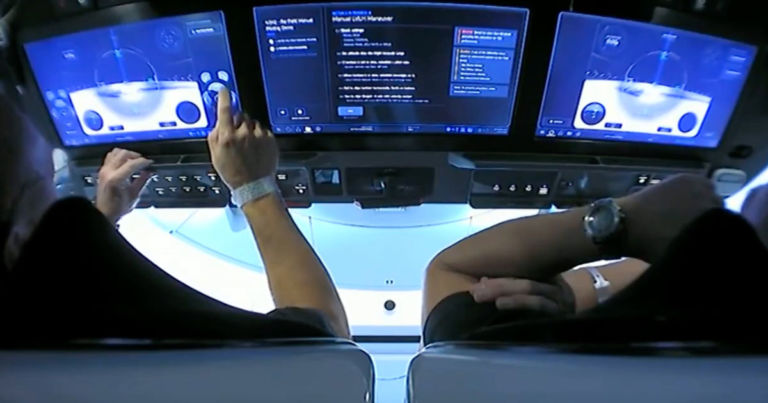Assuming Control
It was a spectacular sight: on Sunday, SpaceX became the first commercial entity to safely deliver astronauts to the International Space Station.
It’s a new chapter in human spaceflight. And it’s a future in which touchscreens and autonomous wayfinding lead the way — a far cry from the mazes of buttons, levers, and readouts we’ve seen in spacecraft cockpits preceding SpaceX’s futuristic Crew Dragon capsule.
Playing Games
Three large touchscreens form the center console of the spacecraft. Once in orbit, NASA astronauts Bob Behnken and Doug Hurley briefly took control over the spacecraft using astonishingly video game-like touchscreen controls, with on-screen buttons for adjusting roll, pitch, and yaw.
In fact, SpaceX claims its recently released browser-based simulator is more or less the same experience. In a notice shown before loading the simulator, the company claims the game uses the “controls of the actual interface.”
Button Mash
NASA planned for the two astronauts to take control twice during its journey to the ISS: once while the spacecraft was coasting in orbit, and again when it was about a kilometer below the station.
Most of the time, excluding the unlikely event of an emergency, Crew Dragon takes care of the navigating automatically. In fact, docking procedures with the space station were carried out autonomously on Sunday morning.
READ MORE: NASA astronauts successfully pilot SpaceX’s Crew Dragon spacecraft manually for the first time [TechCrunch]
More on the launch: WATCH NASA ASTRONAUTS GIVE ZERO-G TOUR OF SPACEX’S NEW CAPSULE



